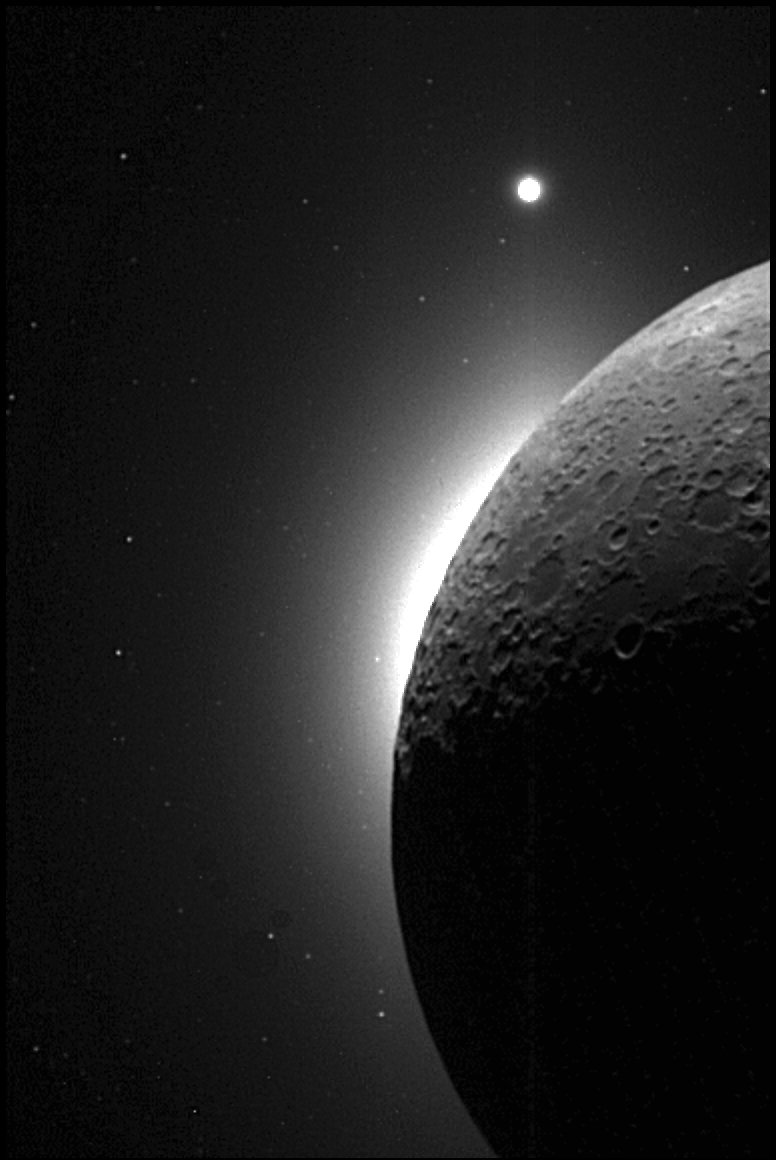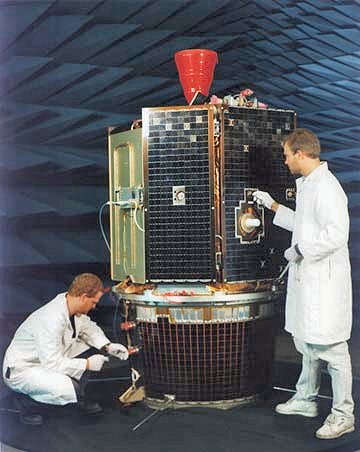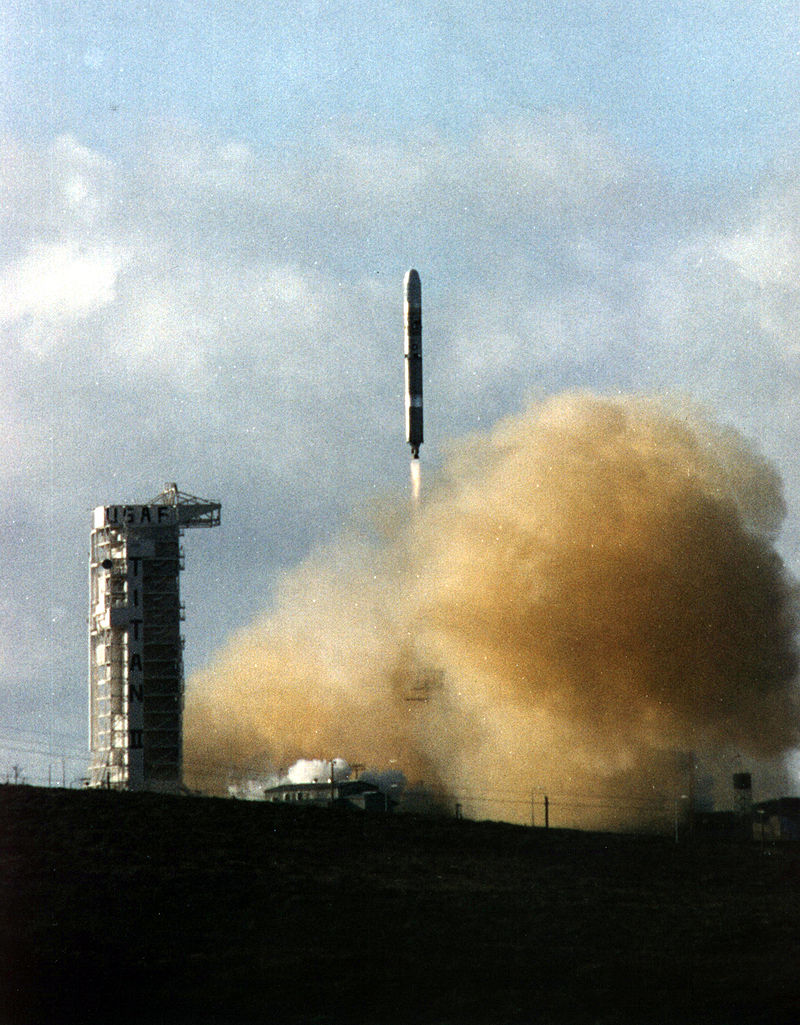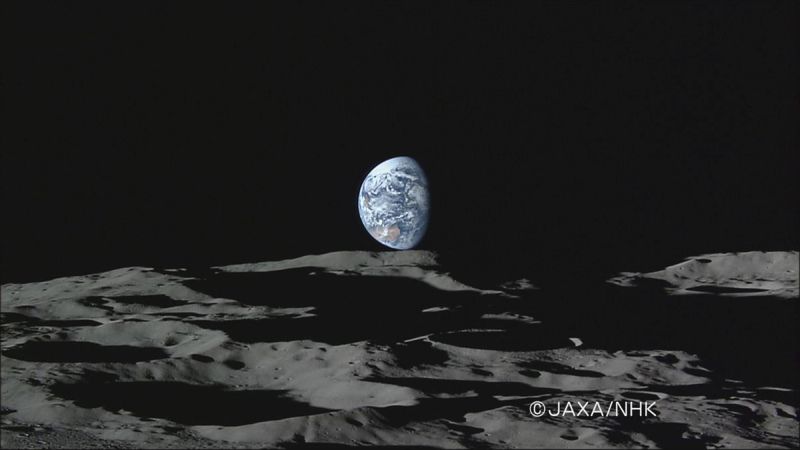'Lost and Gone Forever': Remembering Clementine's Return to the Moon, 25 Years OnBy Ben Evans, on January 25th, 2019
 Star-tracker image of the lunar limb, with Venus a bright object in the background, from Clementine. Photo Credit: NASA/U.S. Geological SurveyWhen a returning Falcon 9 first stage plunged back to Earth and alighted at Landing Zone (LZ)-4 at Vandenberg Air Force Base, Calif., last October—wrapping up SpaceX’s first return-to-launch-site on the West Coast—it did so on a patch of ground used a quarter-century earlier to launch the Clementine spacecraft to the Moon. Excluding Mariner 10, which performed a flyby of our closest celestial neighbor in late 1973, it was the United States’ first dedicated lunar mission since the end of the Apollo era.
Star-tracker image of the lunar limb, with Venus a bright object in the background, from Clementine. Photo Credit: NASA/U.S. Geological SurveyWhen a returning Falcon 9 first stage plunged back to Earth and alighted at Landing Zone (LZ)-4 at Vandenberg Air Force Base, Calif., last October—wrapping up SpaceX’s first return-to-launch-site on the West Coast—it did so on a patch of ground used a quarter-century earlier to launch the Clementine spacecraft to the Moon. Excluding Mariner 10, which performed a flyby of our closest celestial neighbor in late 1973, it was the United States’ first dedicated lunar mission since the end of the Apollo era.
And when Clementine launched from what was then Space Launch Complex (SLC)-4W on 25 January 1994, it began a civilian-military voyage which not only extensively mapped the Moon, but also evaluated sensors and technologies for future missions and might—but for an unfortunately-timed spacecraft malfunction—have also performed a flypast of the Earth-crossing asteroid, 1620 Geographos. Clementine was the United States’ first fully-dedicated mission for lunar exploration in over two decades. Photo Credit: NASALiftoff of the Titan 23G booster occurred at 8:34 a.m. PST, rising smooth as an arrow into the California sky. It was the rocket’s fifth launch since September 1988 and represented the midpoint of a career which had lofted three electronic-intelligence/signals-intelligence satellites and NASA’s ill-fated Landsat-6, the latter of which later failed to reach orbit, due to a ruptured hydrazine manifold. By the end of its operational life in October 2003, the Titan 23G would fly 13 successful missions, including NASA’s QuikSCAT and Coriolis Earth-observation satellites and three weather-forecasting sentinels for the National Oceanic and Atmospheric Administration (NOAA).
Clementine was the United States’ first fully-dedicated mission for lunar exploration in over two decades. Photo Credit: NASALiftoff of the Titan 23G booster occurred at 8:34 a.m. PST, rising smooth as an arrow into the California sky. It was the rocket’s fifth launch since September 1988 and represented the midpoint of a career which had lofted three electronic-intelligence/signals-intelligence satellites and NASA’s ill-fated Landsat-6, the latter of which later failed to reach orbit, due to a ruptured hydrazine manifold. By the end of its operational life in October 2003, the Titan 23G would fly 13 successful missions, including NASA’s QuikSCAT and Coriolis Earth-observation satellites and three weather-forecasting sentinels for the National Oceanic and Atmospheric Administration (NOAA).
Powered away from SLC-4W by 430,000 pounds (195,000 kg) of propulsive yield from its dual-nozzle LR-87 engine, the snub-nosed Titan 23G burned a combination of Aerozine-50—a half-and-half mix of hydrazine and unsymmetrical dimethyl hydrazine—and nitrogen tetroxide for the first-stage portion of its ascent, shutting down as planned at 2.5 minutes. The baton was then taken by the single LR-91 engine of the second stage, which punched out a further 100,000 pounds (45,360 kg) of thrust for three additional minutes to boost the six-foot-tall (1.88-meter), octagonal-prism-shaped Clementine into space. Clementine rides its Titan 23G booster to space on 25 January 1994. Its launch site that day is now used by SpaceX for landing the first stages of its returning Falcon 9 rockets. Photo Credit: NASALike the earlier Redstone—discussed in last weekend’s AmericaSpace history article—the Titan 23G derived its heritage from a potential weapon-of-war, the Titan II missile, a batch of which were refurbished by Martin Marietta in 1986-1988 to transition them into space-capable launch vehicles. During the refurbishment, the forward portion of the second stage received a payload attachment fitting and a payload fairing, whilst the ex-missile’s engines and guidance-and-control systems were extensively overhauled.
Clementine rides its Titan 23G booster to space on 25 January 1994. Its launch site that day is now used by SpaceX for landing the first stages of its returning Falcon 9 rockets. Photo Credit: NASALike the earlier Redstone—discussed in last weekend’s AmericaSpace history article—the Titan 23G derived its heritage from a potential weapon-of-war, the Titan II missile, a batch of which were refurbished by Martin Marietta in 1986-1988 to transition them into space-capable launch vehicles. During the refurbishment, the forward portion of the second stage received a payload attachment fitting and a payload fairing, whilst the ex-missile’s engines and guidance-and-control systems were extensively overhauled.
A joint venture between the Strategic Defense Initiative Organization (SDIO) and NASA, with a science team headed by lunar and planetary scientist Eugene Shoemaker of the U.S. Geological Survey in Flagstaff, Ariz., Clementine was primarily tasked with testing new sensors in a space radiation environment—including an inertial measurement unit and lightweight star trackers, attitude-control reaction wheels, a nickel-hydrogen battery and a solar panel—and evaluate autonomous navigation spacecraft operations.
Following launch, Clementine was inserted into an orbital altitude of 160 miles (260 km) x 184 miles (296 km), inclined 67 degrees to the equator. After several days in low-Earth orbit, Clementine was spun-up to 60 rpm and its on-board rocket motor ignited on 3 February for a Transfer Trajectory Insertion (TTI) burn. Following a so-called “phasing-loop” approach, the spacecraft accomplished two Earth flybys on the 5th and 15th of that month, before entering an elliptical polar orbit around the Moon on 19 February. It mission comprised two phases, the first of which—from 26 February through 26 March—achieved a periapsis of 250 miles (400 km) at South latitudes and an apoapsis of 5,160 miles (8,300 km), whilst its second—from 26 March through 21 April—saw the orbit “rotated” to North latitudes. This permitted Clementine to complete global mapping of the lunar surface from 60 degrees South to 60 degrees North across 297 orbits. The barren lunar surface, juxtaposed against the colors of Earth, as seen from Clementine. Photo Credit: NASADuring this period, the spacecraft mapped the topography and composition of the major regions of the Moon, covering 14.6 million square miles (38 million square km) and—using a range of instruments at visible to near-infrared wavelengths—provided the first view of the global “color” of our natural satellite. Of particular significance was confirmation of the 1,600-mile-wide (2,500 km) South Pole-Aitken basin, whose depth was pegged at 7.5 miles (12 km), the largest and deepest impact feature then known in the Solar System. All told, Clementine returned some 1.6 million digital images, providing scientists with their first glimpse of the lunar surface in its totality.
The barren lunar surface, juxtaposed against the colors of Earth, as seen from Clementine. Photo Credit: NASADuring this period, the spacecraft mapped the topography and composition of the major regions of the Moon, covering 14.6 million square miles (38 million square km) and—using a range of instruments at visible to near-infrared wavelengths—provided the first view of the global “color” of our natural satellite. Of particular significance was confirmation of the 1,600-mile-wide (2,500 km) South Pole-Aitken basin, whose depth was pegged at 7.5 miles (12 km), the largest and deepest impact feature then known in the Solar System. All told, Clementine returned some 1.6 million digital images, providing scientists with their first glimpse of the lunar surface in its totality.
One major discovery, via Clementine’s bistatic radar experiment, were indications of ice deposits at the bottom of permanently-shadowed craters in the vicinity of the lunar south pole. Predictions of its volume ranged from 2.1 million cubic feet (60,000 cubic meters) to 4.2 million cubic feet (120,000 cubic meters), comparable to a small lake with a surface area of four football fields. More recent observations have yielded differing results. The deliberate crashing of the Lunar Prospector orbiter into the south polar crater Shoemaker in July 1999 revealed no discernible evidence of water vapor, although the Lunar Crater Observation and Sensing Satellite (LCROSS)—which was impacted into the crater Cabeus, about 62 miles (100 km) from the south pole in October 2009—revealed vapor plumes which support the existence of water-ice in the lunar regolith. Perhaps Clementine’s greatest legacy is offering us our first real hint that the lunar south pole not only possesses water-ice deposits, but may be an ideal location for a future human base. A high-definition image of the Earth rising above the Moon’s south pole, taken from Japan’s Kaguya lunar orbiter in 2007. Permanently shadowed craters near the lunar polar regions have been found to harbor water ice deposits and organic compounds. Image Credit: JAXASadly, Clementine’s mission ended prematurely.
A high-definition image of the Earth rising above the Moon’s south pole, taken from Japan’s Kaguya lunar orbiter in 2007. Permanently shadowed craters near the lunar polar regions have been found to harbor water ice deposits and organic compounds. Image Credit: JAXASadly, Clementine’s mission ended prematurely.
Subsequent plans called for the spacecraft to depart lunar orbit on 5 May and, after two more Earth flybys, execute a three-month cruise to reach 1620 Geographos on 31 August 1994. This highly elongated stony asteroid, discovered in 1951, orbits the Sun every 17 months, between a distance of 0.8 and 1.7 astronomical units. As a potentially hazardous asteroid, the highly elliptical orbital route of Geographos—named in honor of its discoverers at the National Geographic Society—brings it within 0.05 astronomical units of Earth and, in 1994, it drew to within 5 million miles (8 million km) of us.
However, just two days after leaving lunar orbit, on 7 May, Clementine suffered a malfunction which caused one of its attitude-control thrusters to fire for a period of 11 minutes, effectively using up its dwindling fuel reserves and placing the little spacecraft into a spin of 80 revolutions per minute. Over the next few weeks, power levels grew so low that telemetry was no longer intelligible.
It was a premature end to a highly successful voyage which lay on the very cusp of returning additional valuable data from Geographos. Just like the 19th-century western folk ballad “Oh My Darling, Clementine”—for which the spacecraft was named—the mission was expected to be “lost and gone forever” after its short foray into the cosmos. It is a sad footnote of history that the robotic Clementine was indeed lost and gone forever, albeit far sooner than ever envisioned.Source:
https://www.americaspace.com/2019/01/25/lost-and-gone-forever-remembering-clementines-return-to-the-moon-25-years-on/